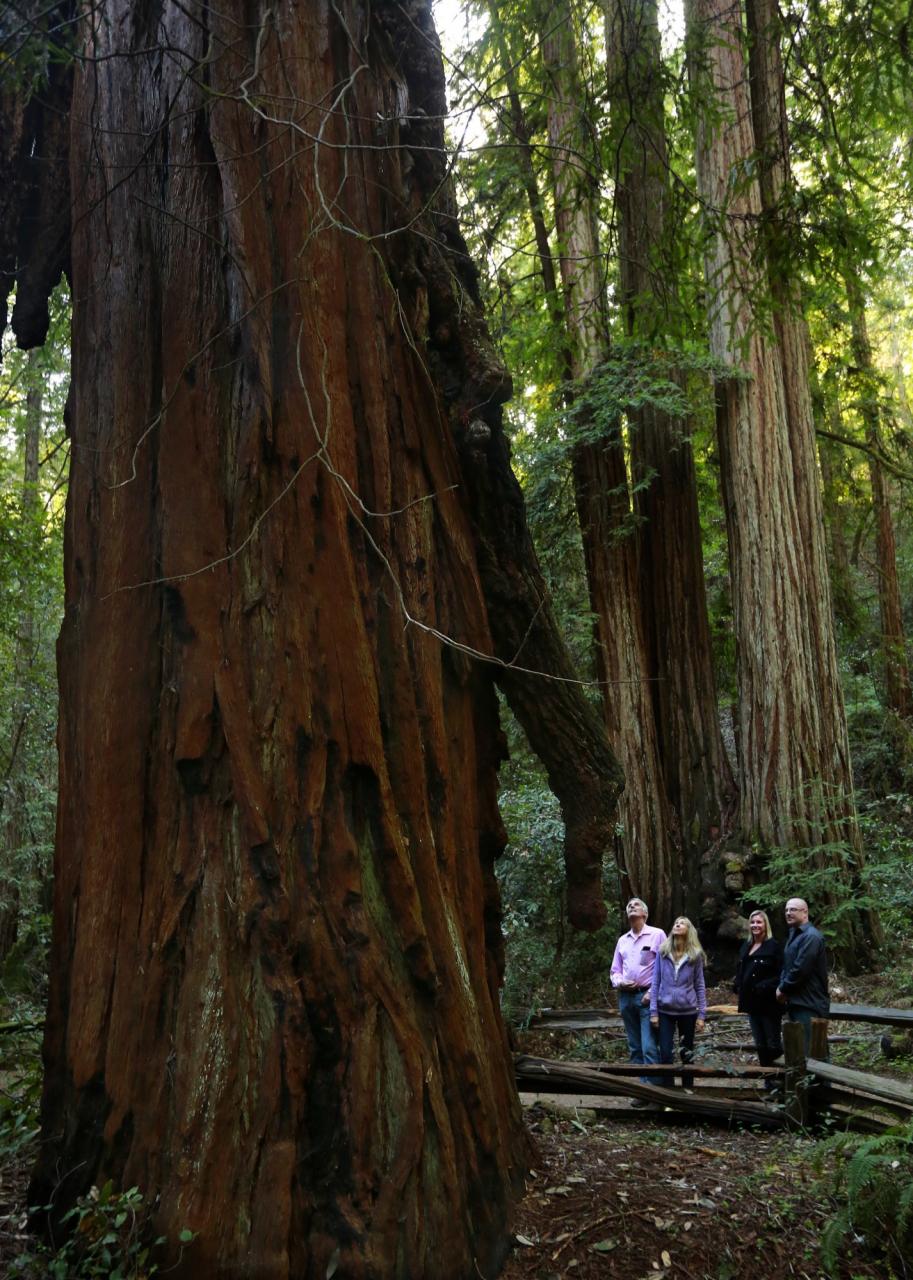
Interpretive signs along the self-guided, disability-accessible trails share the history and highlights of the grove. Dogs, horses and bikes are not permitted along these trails.
Depending which pathways are taken, the Pioneer Trail can cover from 1 to 1.7 miles (ADA accessible), with the longer option extending to the picnic area, a popular spot with grills, tables and restrooms, gigantic trees and seasonal creeks offering a picturesque backdrop to a quick bite or leisurely lunch.
The trails are just a short walk from the park entrance and the nearby visitor center. Marked by moss-covered wooden railings, the trails are wide enough to accommodate the many visitors whose heads often crane to study the towering trees overhead.
Stately coast redwoods – formally Sequoia sempervirens – inspire awe from visitors of all ages, treasures from the primeval redwood forest that once covered much of the area before logging began in the 19th century.

Tanbark oak, California bay laurel and big-leaf maple also dot the reserve, with the forest floor sporting lichens, mosses, sorrel, mushrooms and wildflowers like fairy bells and redwood orchids at various times throughout the year.
The Parson Jones Tree is the first point of interest greeting visitors, just a short stroll from the park entrance. It towers some 310-feet high, the tallest tree in the grove.
It’s among the magnificent trees protected when Col. James Armstrong, a lumberman and Union officer in the Civil War, held the land for a natural park and botanical garden in the 1870s.
A plaque at the Colonel Armstrong Tree named in his honor details his vision to save part of the forest and the campaign his family pursued to protect the land following his death. Purchased for $80,000 by the county in 1917, the state took over the grove in 1934 and opened it for public enjoyment two years later.
Armstrong’s namesake tree is the oldest in the grove, estimated at more than 1,400 years. With a diameter of more than 14 feet, it’s also the largest tree in mass within the reserve. Other redwoods towering nearby seem diminutive in comparison.
An adjacent bench allows visitors to bask in the scenery and ponder the significance of the aged tree and the grove of first-growth coast redwoods.
The tree is located where the Discovery and Icicle Tree trails meet, a half-mile walk from the park entrance.
Both trails connect to the main Pioneer Trial, where two wooden footbridges crossing Fife Creek and a stream near the picnic grounds were bringing particular joy to a family of four school-age children bundled for the cold weather on a recent day and racing repeatedly across the bridges.












